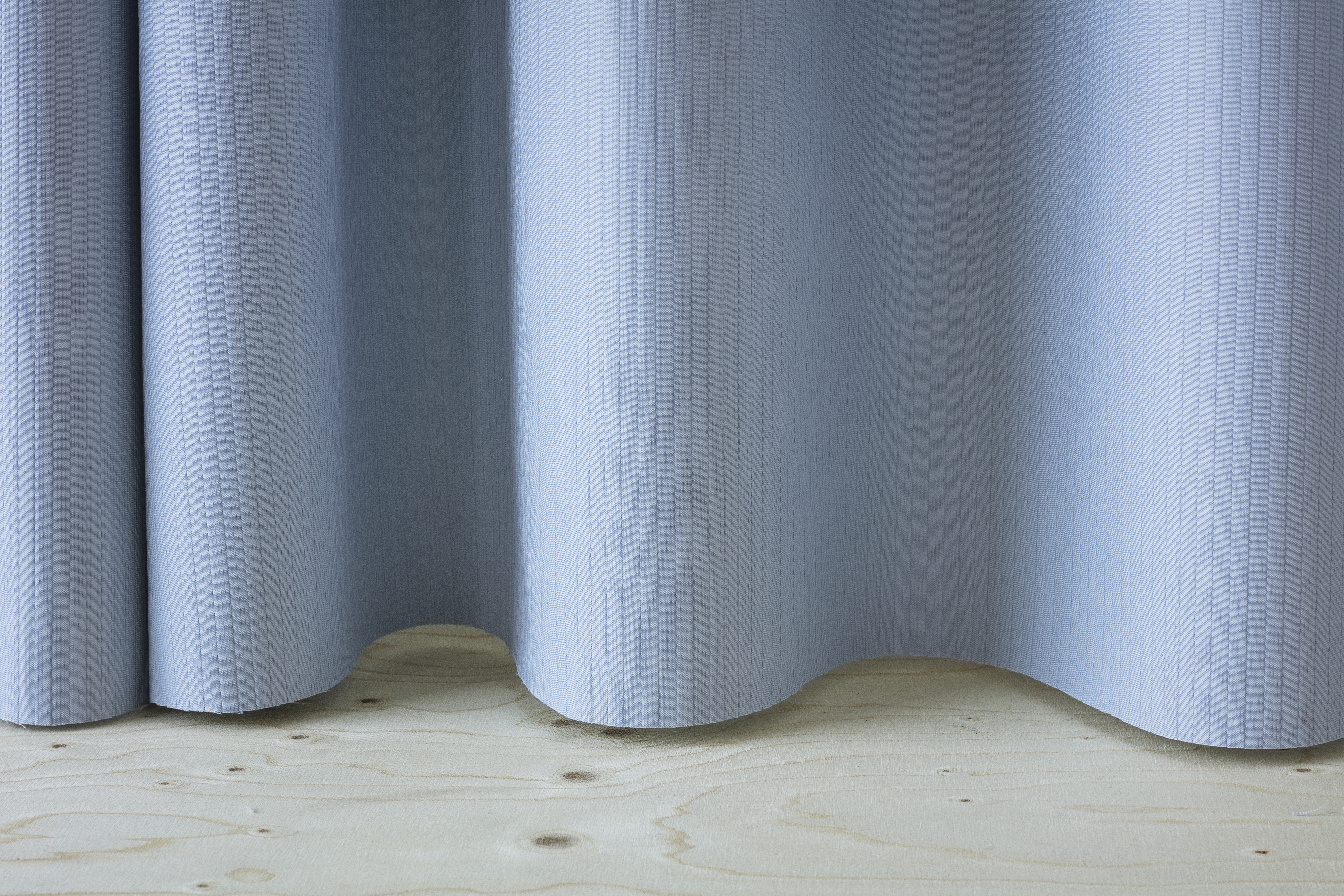Benefits with curtains as sound absorbers
• Cost-effective, attractive interior design feature, controls the light level
• Easy to position and require no expensive installation
• Best in the high-frequency range typical of distracting conversations
Sound absorbing textiles
A curtain can not only be attractive in a room, but it can also be used as an effective sound absorber.
Perhaps you have played the perfect squash stroke, and left your opponent with no option but to concede the point. In such situations, it's fun having hard materials that don't kill the bounce. But it's not so much fun when the reverberation of a bouncing sound lingers as a disturbing noise in an office, auditorium or classroom.
Important with sound absorbing materials
Just as the ball loses momentum if it bounces against something soft, the sound does the same when it hits an absorbent material. It stops being reflected in the room. The reverberation dies away and disappears.
The room's reverberation is reduced. In simple terms, that's how sound damping works. When sound encounters a material, some are absorbed and some are reflected. That's why it's important to use materials with good sound-absorbing abilities.

Multi-functional curtains
Textiles are an excellent material for absorbing sound. Particularly curtains developed and woven to function as sound absorbers. Compared with other types of sound absorbers, they are cost-effective, control light levels and create an attractive interior design feature. They are also easy to position and install. Noise and unwanted light disappear, leaving just the beautiful curtains hanging there.
Sound-absorbing curtains work best in the high-frequency ranges. In open-plan offices, there may be problems with distracting conversations, fan noise and the like. Sound-absorbing curtains reduce reverberation, which means the brain does not have to process annoying sounds of no importance. In this way, we gain a greater capacity to remember, solve problems and process important information.
• For the best effect, the curtains must hang at least 10 cm from the wall.
• The sound in a room bounces between opposite surfaces: wall to wall, ceiling to floor. Having one surface area with a sound absorber is sufficient to disrupt the sound field. For that reason, focus on walls that are at an angle to each other.
• The more folds a curtain has, the more it dampens sound.
• Think beyond windows. Beautiful fabric can also hide a boring, poorly sound-absorbing plaster wall.
How do I know whether the room has a short or long reverberation time?
Clap your hands instead of bouncing a ball. Clap hard once, and listen to how the sound fades away. In a good acoustic environment, the hand clap fades away immediately. It should not persist.
Sound absorption coefficient and absorption classes
To establish how well different materials absorb sound, the reverberation time in a reverberation room is measured, and then the material's sound absorption coefficient, i.e. how well the material absorbs sound, is measured. There are also different classes for the ability to absorb sound.
Absorption classes range from A to E, with A being the best. The material's class is determined by its sound absorption coefficient at different frequencies. The coefficient is stated in an ascending scale from 0.0 to 1.0, with 0.0 meaning the material reflects all sound and 1.0 meaning it absorbs all sound.

Sound absorption coefficients
• Concrete or plaster walls: 0.03 (3%)
• Glass: 0.05 (5%)
• Soft flooring: 0.15-0.25 (15-25%)
• Curtains: 0.10-0.15 (10-15%)
• Acoustic curtains: 0.35-0.70 (35-70%)
• Sound absorber: 0.75-0.85 (75-85%)
A textile material's ability to absorb sound is measured in a reverberation room that meets stringent quality standards (ISO 354:2003). The results give us various sound reflection and absorption properties.
A brief glossary of common terms
Sound is pressure changes in the air. A sound is characterised by its sound level, like sound pressure (Pascal), and the number of oscillations per second, the sound's frequency (Hertz). Sound levels are stated in decibels (dB). The decibel (dB) is a measure of sound level. The decibel scale is an ascending scale, with the quietest sound a person with normal hearing can perceive being 0 dB. The pain threshold of the human ear is about 130 dB.
- Near-silence – 0 dB
- Whisper – 15 dB
- Conversation – 60 dB
- Lawnmower – 90 dB
- Car horn – 110 dB
- Rock concert or aircraft engine – 120 dB
- Pistol-shot – 140 dB
Hertz (Hz) expresses a sound's frequency, with 1 Hz being one oscillation per second. A low frequency (a few oscillations per second) produces a low bass sound. A high frequency produces a high, piercing sound, like the sound of a whistle.
Audible sound has frequencies that lie within the limits of audibility, which for a normal person spans 20-20,000 Hertz. The Pascal (Pa) is the unit of measurement for sound pressure. Together with Hertz, they represent a sound's level.